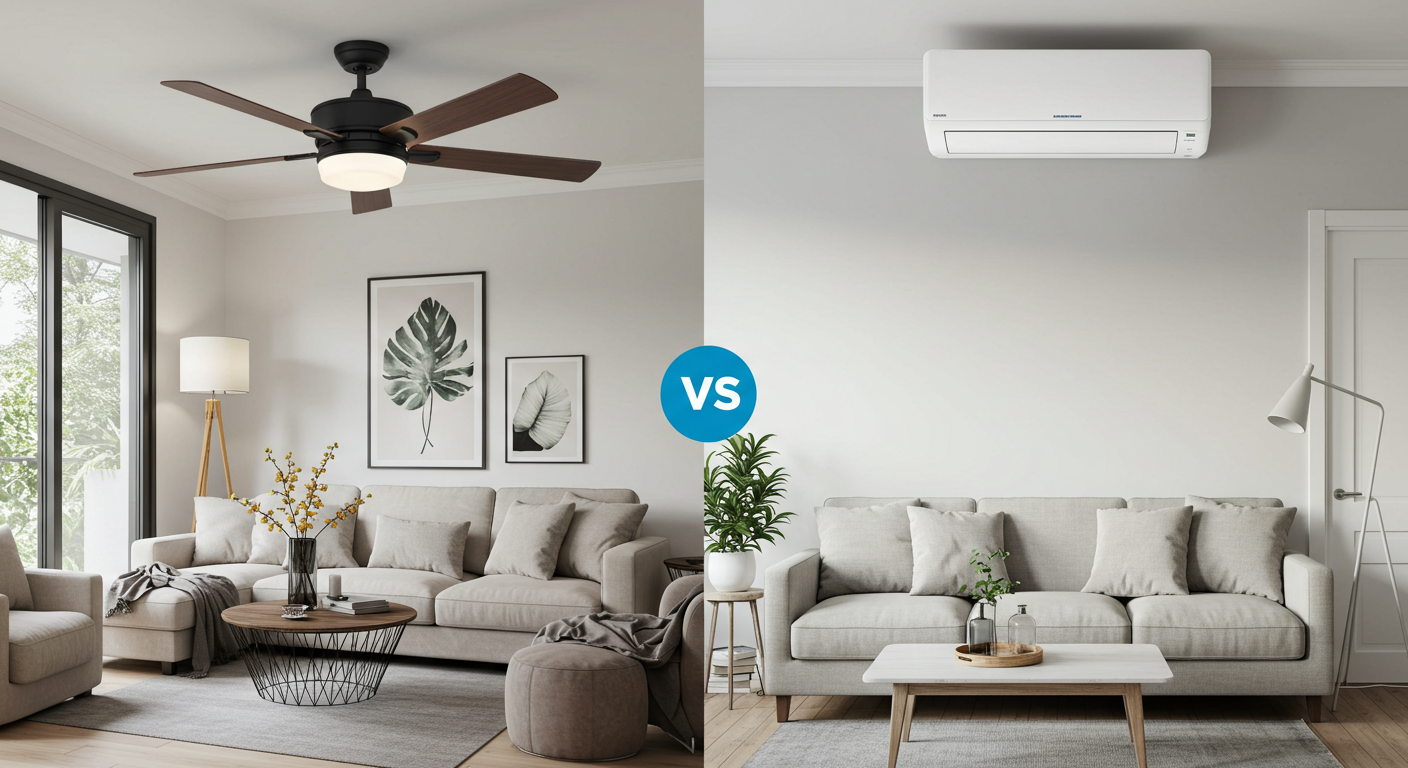Ceiling Fan vs Air Conditioner: Smart Budget Choice
Melbourne summers don’t play nice. They swing from cool mornings to oven-grade afternoons, and cooling the place down isn’t getting cheaper.
Most people know the basic trade-off: fans are cheaper to run, while air conditioners actually cool the room. But here’s where it goes sideways: people choose the wrong system for their space, or worse, overspend on something that barely makes a difference.
We see it all the time in homes and businesses:
A ceiling fan installed in a dead air pocket is doing nothing.
An oversized AC running flat out in an open-plan room, it was never designed for.
Power bills that could’ve been halved with better zoning and airflow.
This guide is for when you're stuck between the low upfront cost of a fan and the stronger (but hungrier) power of an AC. It’s not about trends, it’s about making a call that saves you money over time, not just at checkout.
We’re Melbourne Wiring Services. We wire these systems up every day, and we’ve got no interest in upselling what you don’t need. This is what actually works.
The Truth About Running Costs (That Power Bills Don’t Show You)
If you’re comparing fans and air conditioners, ignore the glossy brochures. Just open your last power bill.
Here’s the short version:
Ceiling fans cost next to nothing to run, around 2 to 6 cents per hour, depending on the model.
Split system air conditioners? Anywhere from 30 to 70 cents an hour, and that’s before factoring in poor insulation or an oversized unit running flat out.
Let’s do some napkin maths for a Melbourne summer (90 days, 6 hours per day):
| System | Hourly Cost | Daily | Full Summer |
|---|---|---|---|
| Ceiling Fan | 2–6¢ | 12–36¢ | $10–$30 |
| Air Conditioner | 30–70¢ | $1.80–$4.20 | $160–$380+ |

